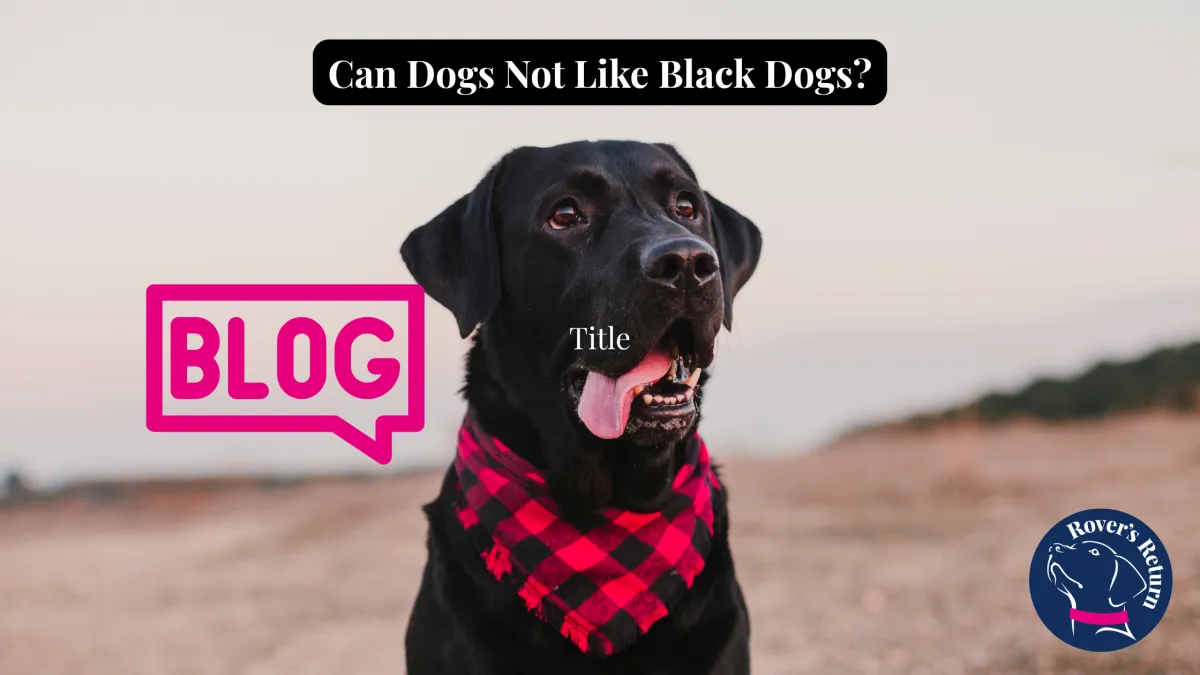Book a FREE 1:1 Assessment Call By Clicking HERE
Specialising In Dog Reactive Behviour
Accredited by APDT, ABTC and UK DOG Behaviour and Training Charter
Qualified and Experienced
Force Free Trainer and Behaviourist
Dog Training Leicestershire Educational Blogs

Why Does My Do React to Black Dogs?
Can Dogs Not Like Black Dogs?

Recently, I asked my fellow dog professionals for blog ideas, and the intriguing question of why some dogs react negatively to black dogs came up. It's a phenomenon I've personally observed with my own wonderful Bert. He seems noticeably more uneasy, sometimes even reactive, in the presence of black dogs compared to others.
My initial thought, and perhaps a natural assumption for many of us, was that a specific past event was the culprit. When Bert was just a young pup, he was rather roughly jumped on by a friendly but undeniably exuberant black Labrador. It definitely startled him, and I've always wondered if that single incident ingrained a negative association.
The reasons behind this kind of specific reactivity can be more nuanced and multifaceted than just one bad experience. While that early encounter with the black Lab likely played a role in shaping Bert's initial perception, there could be other contributing factors at play.
It's a baffling experience for dog owners: you're enjoying a walk, and suddenly your usually friendly canine companion lunges, barks, or displays intense fear towards a black dog. This specific reactivity can leave you feeling confused, embarrassed, and deeply concerned. You're not alone. Many owners grapple with this issue, and while it might seem strange, there are several potential reasons why your dog might react adversely to dogs with black coats.
It's crucial to understand that this behaviour is rarely about actual malice towards black dogs specifically. Instead, it's often rooted in a combination of factors related to perception, learning, and even breed predispositions.
Why does my dog get aggressive with black dogs?
Let's delve into some of the most common explanations:
1. Visibility and Perception:
Reduced Visual Cues: In certain lighting conditions, particularly low light or against dark backgrounds, the features and body language of a black dog can be harder for other dogs (and even humans) to discern. Dogs rely heavily on visual cues for communication. If they can't clearly read another dog's subtle signals (like tail wags, ear position, or facial expressions), it can lead to anxiety and uncertainty. This ambiguity can trigger a defensive or fearful reaction. It is more difficult for dogs to read expressions in black dogs, particularly facial expressions.
Sudden Appearance: A black dog might seem to "appear out of nowhere" in dim lighting, startling a more sensitive dog. This suddenness can be perceived as a threat.
The dog's vision differs to humans. Dog’s have better low light and peripheral vision, and do not see the facial expressions as well as we do. So on a bright sunny day your dog’s vision isn’t as good.
When meeting, some dogs are more cautious than others, which isn’t a bad thing. Dog’s have a natural chain that happens where they see & approach then go nose to nose, arc towards the rear before deciding which way to proceed. Because of the visual issues, the sight of the black dog can cause uncertainty, which can quickly increase to anxiety and defensive to protect themselves.
Dogs are limited to the colours that they see, however they can see the colour black.
Dogs rely heavily on visual cues for communication.
2. Learned Experiences (Negative Associations):
Past Negative Encounters: The most significant factor is often a previous negative experience involving a black dog. This could have been a fight, a scare, or even a series of uncomfortable interactions. Even if the incident seemed minor to you, it could have been traumatic for your dog, leading to a learned negative association.
Generalisation: Unfortunately, dogs can sometimes generalise negative experiences. If your dog had a bad encounter with one black dog, they might start to associate the black coat colour with danger, even if other black dogs are friendly.
Is it certain breeds that they don’t like, who happen to be black?
3. Breeder Influence and Early Socialisation:
Lack of Early Positive Exposure: If your dog wasn't adequately socialised with a variety of dogs during their critical puppyhood period (roughly 3-16 weeks), they might be more wary of unfamiliar dogs in general, and the visual challenge of a black coat could exacerbate this.
Breed Predispositions: Some breeds are naturally more cautious or reactive than others. While not specific to coat colour, a dog with a predisposed tendency towards anxiety or territoriality might be more likely to develop a specific reactivity if a negative experience occurs.
4. The "Black Dog Syndrome" (Human Bias):
It's important to acknowledge a phenomenon known as "Black Dog Syndrome" or "Big Black Dog Syndrome" in the human realm. Sadly, studies and anecdotal evidence suggest that black dogs in shelters often take longer to be adopted and are sometimes perceived as more aggressive or intimidating by humans. While this is a human bias, it highlights how visual perception can influence reactions. It's unlikely your dog is consciously subscribing to this human bias, but the reduced visual clarity might contribute to their unease.
What Can You Do?
Addressing reactivity towards black dogs requires patience, understanding, and a consistent, positive approach:
Management is Key: Avoid situations where your dog is likely to encounter black dogs at close range, and react. This might mean crossing the street, turning down a different path, or increasing distance.
Desensitisation and Counter-Conditioning (DS/CC): This is the most effective long-term strategy.
Desensitisation: Gradually expose your dog to black dogs from a safe distance (where they don't react). The goal is for them to simply notice the black dog without eliciting a negative response.
Counter-Conditioning: Pair the presence of a black dog (at that safe distance) with something your dog loves, like high-value treats. The aim is to change their emotional association from negative to positive.
Positive Reinforcement Training: Focus on rewarding calm behaviour in the presence of black dogs (even at a distance).
Consult a Professional: A certified professional dog trainer or a veterinary behaviourist can assess your dog's specific triggers and develop a tailored behaviour modification plan. They can also help rule out any underlying medical conditions that might be contributing to anxiety.
Patience and Consistency: Changing ingrained reactions takes time and consistency. Don't get discouraged by setbacks.
Understanding why your dog might react negatively to black dogs is the first step towards helping them overcome this challenge. By focusing on positive reinforcement, careful management, and potentially professional guidance, you can work towards a future where encounters with all dogs are more positive and less stressful for your beloved companion.
Highly Qualified Behaviourist
Accredited by APDT, ABTC and UK DOG Behaviour and Training Charter
Accredited Scentwork Instructor
Force Free Trainer and Behaviour
Force Free Trainer and Behaviour
Accredited Scentwork Instructor
Accredited by APDT, ABTC and UK DOG Behaviour and Training Charter
Highly Qualified Behaviourist
Contact Us
Sam: 07725 802995
You can contact us via Live Chat button at the bottom of the screen or the contact box to the right.
You can also book one of our services online using the View Dates buttons under the service you require.
© 2023 by Rovers Return Dog Trainers Academy - Force Free Dog Training Lutterworth, Broughton Astley, Leicestershire, Hinckley, Nuneaton, Stoney Stanton, South Kilworth, Ullesthorpe
Privacy Policy | Terms and Conditions | Terms and Conditions of Services | Sitemap

Facebook
Instagram
X
LinkedIn
Youtube
TikTok